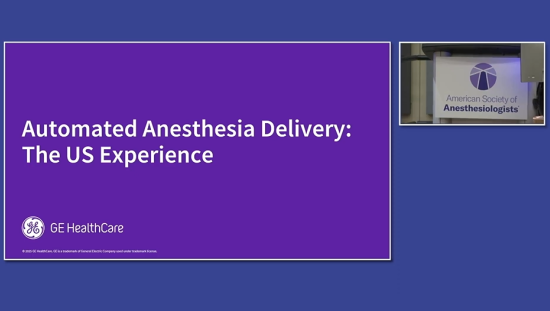A comparison study of SpO₂ performance in clinical motion conditions
Mikko Hyle, M.Sc., Pekka Vainio, M.Sc.
Background
SpO₂ is one of the basic measurements utilized in patient monitoring, from low acuity patients in home care or ward up to the very demanding clinical situations in high acuity care.¹ Common to various care settings is patient motion while being monitored, and this makes it difficult for devices to capture readings continuously and accurately. Since this information is crucial in making timely care decisions, technologies used in monitoring must be reliable under challenging conditions and, if not, it must be clear that the parameter is not being monitored at that point of time.
The aim of this study was to investigate how certain SpO₂ devices and technologies behave in clinical motion conditions. The study was conducted in June 2010 by an independent third party.
Study Setup and Methodology
While SpO₂ is the main parameter acquired with pulse oximetry, pulse rate and plethysmographic waveform amplitude are also important and clinically relevant parameters. Because of this, this study focused on both the ability of the system to give SpO₂ readings and the performance of the system for defining pulse rate during motion conditions. The comparison between devices was non-blood comparison, meaning that no blood sampling was done. Performances were compared to a reference monitor, and an adhesive type of sensor from the respective manufacturer was used with each device tested.
The twelve volunteers enrolled in the study comprised of dark, medium and light skin tones. Each subject signed a written consent, and an institutional review board (IRB) approval was received before the study took place. The study was conducted according to ISO9919 and FDA’s Draft Guidelines for Pulse Oximeters.
The following four systems were evaluated in this study:
- GE Healthcare’s Compact Critical Care Monitor with TruSignal™ v2 OEM board
- GE Healthcare’s Compact Critical Care Monitor with an E-PRESTN module
- Nellcor OxiMax® N-600x™ pulse oximeter
- Masimo SET® Radical 7 pulse oximeter
The E-PSM module was not included since it uses the same SpO₂ measurement board with the same motion algorithm as the E-PRESTN module.
Each of the four systems was challenged with two sets of three types of motion:
- Palm down using a clenching, pressing and rubbing motion (CPR)
- Palm up with twitching / clenching (T/C)
- Tapping motion (Tap)
The CPR and T/C types of motion were tested because these are commonly seen in the hospital. The Tap motion was tested based on its use in device manufacturers’ FDA motion submission data and also of its use in motion studies. However, real clinical motion patterns are more irregular in nature, and periodic type of tap motion does not best describe the motion performance of an oximeter.²
Motion was induced at room air levels, during a transition oxygen desaturation phase to a level below 90% (target 85-88%) to determine if the systems were not able to track the respective manufacturer’s non-moving reference sensor during the events. The desaturation and motion procedure was repeated for each of the three motion types. At the end of the first set of motions, the sensors were moved to different fingers, and the motion set was
repeated. For each system the SpO₂ and pulse rate values were compared to its respective sensor on the non-motion hand for deviations in readings.
Data Analysis
A power analysis was performed to determine the sample size needed to identify a difference of 5% in the total number of failure events between pulse oximetry manufacturers. For pulse oximetry motion studies, assuming the null hypothesis is “motion has the same effect on accuracy for all oximeter platforms”, and a power of 0.9 (α=0.05 and β=0.1), then a sample size of 1047 events will provide a 90% probability that we can accurately detect a deviation in performance of 5% or more events between oximeter platforms.
Each manufacturer’s motion SpO₂ and pulse rate data (DUT) was paired with their respective reference (REF) non-motion sensor.
A baseline offset or bias (Equation 1) was calculated from the room air, non-motion period collected for one minute at the beginning of the study, and at the nearest non-motion plateau for each level. This value was used to correct for any site or sensor offset so that the actual deviation introduced from motion could be calculated. The offset is calculated for each plateau level.
REF = Reference non-motion value (SpO₂ or pulse rate)
DUT = Device under test motion value (SpO₂ or pulse rate)
n = Number of readings (SpO₂ or pulse rate)

The data was parsed in 15-second events. The bias between the SpO₂ readings l (Equation 2) was calculated to identify if the system generally reads low or high during stable plateau periods of motion. Zero readings (zeros or dashes) were included in this calculation.
The average difference of the SpO₂ readings in the 15-second interval, Avg Diff15, (Equation 3), was calculated for each event throughout the test.
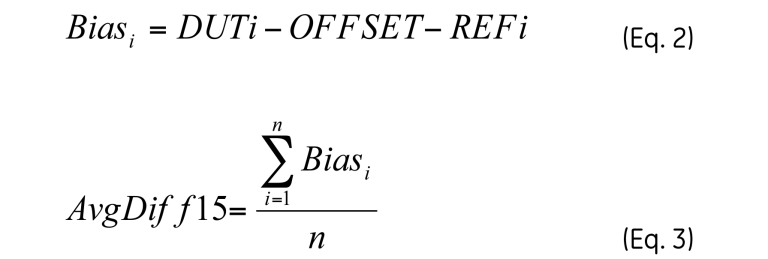
For the SpO₂ data, the number of events in which the average difference (Avg Diff15) is greater than 3%, greater than 5%, and greater than 10% were calculated along with a percentage for each group (>3, >5, >10)
For the pulse rate data, the number of average difference events that are greater than 5% and greater than 10% were calculated along with a percentage for each group (>5, >10).
The pulse oximeters were ranked based on their measurement results defined above.
Results
In the study there were 1744 counts of 15-second event periods used in the calculations for ranking of the motion performance of the devices. This is greater than the 1047 counts required to identify a 5% difference in the number of failure events between pulse oximeter platforms.
SpO₂ Ranking
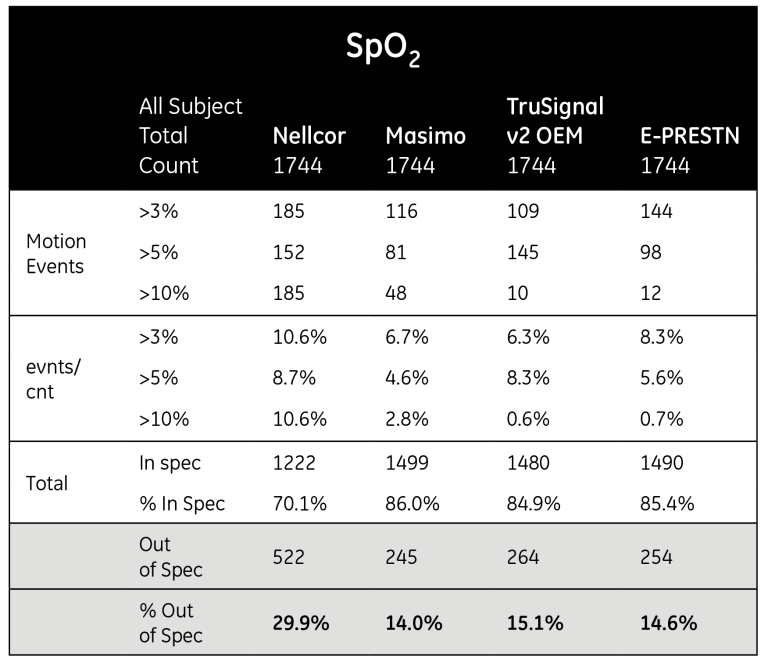
The SpO₂ motion event results were similar between the Masimo SET Radical 7 (14% out of specification), TruSignal v2 OEM (15% out of specification) and E-PRESTN module (15% out of specification).
Nellcor N-600x system ranked the fourth, with 30% being out of specification, showing a reading >3% off.
The data also shows that the Nellcor N-600x system was just as likely to read >10% off as >5% and >3%. The Masimo SET Radical 7, TruSignal v2 OEM and E-PRESTN systems all showed similar offset readings of >3% and >5% and had lower incidences of occurrence that were >10% offset in readings.
Reviewing the number of failures based on the motion type, it should be noted that all systems had fewer failures during the regular tap motion and more failures with the CPR and T/C clinical types of motion.
Pulse Rate Ranking
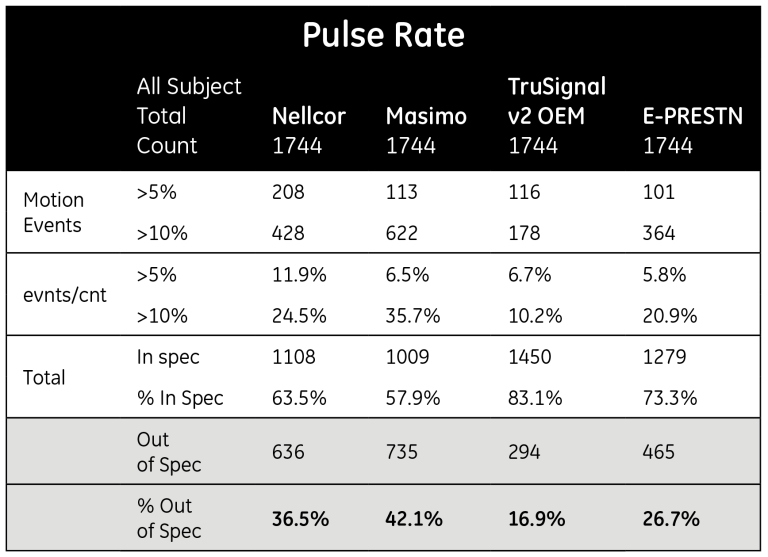
For pulse rate results GE Healthcare’s Compact Critical Care Monitor with TruSignal v2 OEM board had the best performance in this study, followed by the other GE product, the E-PRESTN module. These were followed by Nellcor and Masimo devices, respectively. The criteria for failure were to give readings high and out of specification, read zero or show dashes. TruSignal v2 had only 17% failures, E-PRESTN 27%, Nellcor 37% and Masimo 42%.
Discussion
The results of the SpO₂ study show that the Masimo SET Radical 7, the TruSignal v2 OEM and the E-PRESTN have similar performance of SpO₂ failure rates, followed by the Nellcor N-600x.
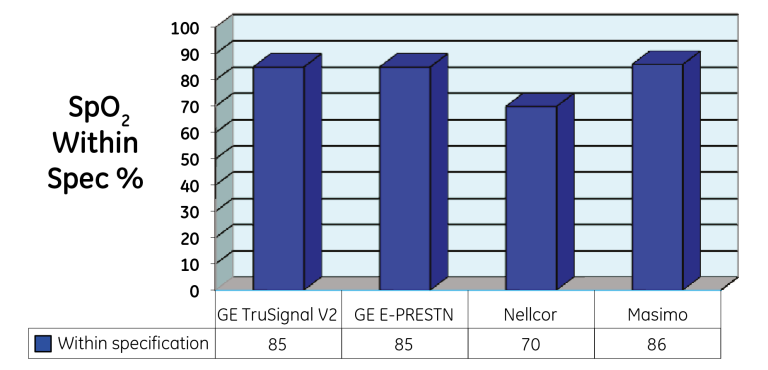
For pulse rate results GE Healthcare’s Compact Critical Care Monitor with TruSignal v2 OEM board had the best performance in this study, followed by the other GE product, E-PRESTN module. These were followed by the Nellcor and Masimo devices, in this order.
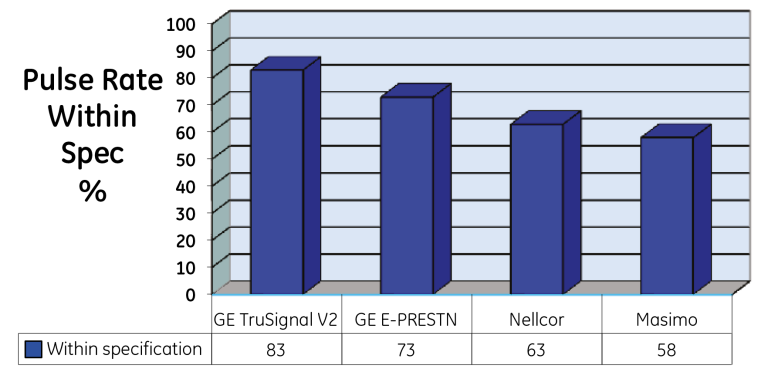
In the study each system was challenged with three types of motion, including palm down using a clenching, pressing and rubbing motion (CPR), palm up with twitching / clenching (T/C), and a tapping motion (Tap). Clinical motion patterns are irregular in nature and periodic type of tap motion does not best describe the motion performance of an oximeter in a clinical environment. However, a tap motion was included because it is so commonly used in motion studies. The CPR and T/C types of motion were selected because these types of motions are commonly seen in the hospital.
Conclusion
According to these test results, as conducted by an independent third party, the overall SpO₂ and pulse rate performance in challenging motion conditions of GE Healthcare’s TruSignal v2 OEM and E-PRESTN module is among the top when compared to other widely used SpO₂ technologies.
References
- J. Kelleher , “Pulse Oximetry”, J. Clin. Monit. 5, 37-62 (1989).
- R. Tobin, J. Pologe, P. Batchelder, “A Characterization of Motion Affecting Pulse Oximetry in 350 Patients”, Anesth Analg 94, S54-S61 (2002).


